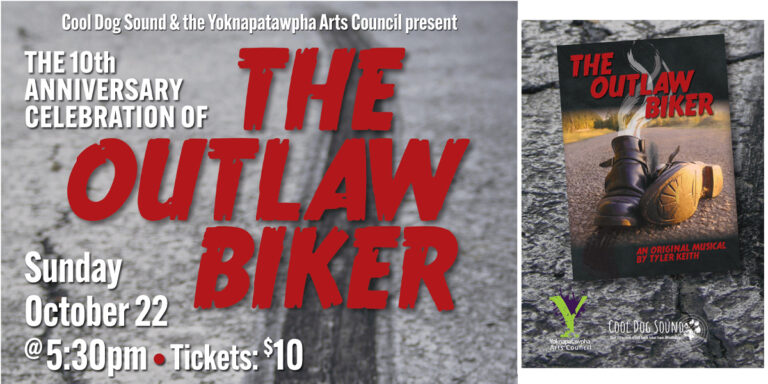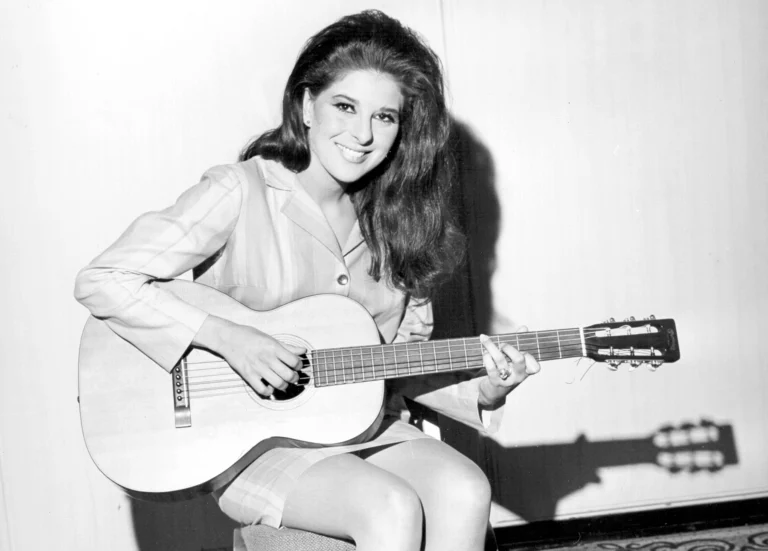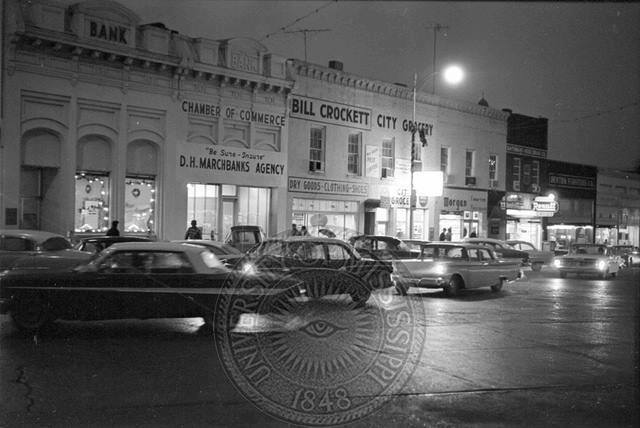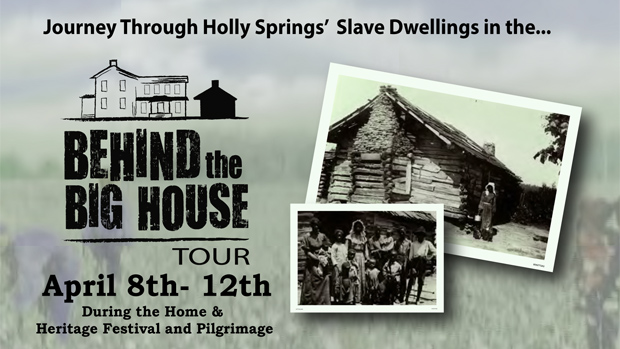
Plan a journey through Holly Springs slaves’ quarters in the fourth annual Behind the Big House Tour. Group and school tours are welcome Wednesday, April 8, through Saturday, April 11.
Visitors will be allowed a rare look into the lives of Holly Springs’ slave population during the tour. The award-winning tour corrects the tradition of ignoring the humble structures behind the big houses, and the enslaved population who served to make that gracious living possible, and in fact happen at all…and at great human cost.
Tour of Slave Quarters
Delve behind the hoop-skirts and mint juleps to the hard life behind the big house.
The South has a rich and varied history. The storybook life seen on the silver screen is often just one side of our past. Behind the grand mansions, beyond the freshly pressed linens, lay small and intimate slave quarters where work, toil, and history also happened. Holly Springs is home to 20 slave quarters, and three of them will be on the 2015 tour.
Another side of antebellum life will be seen through these surviving structures with a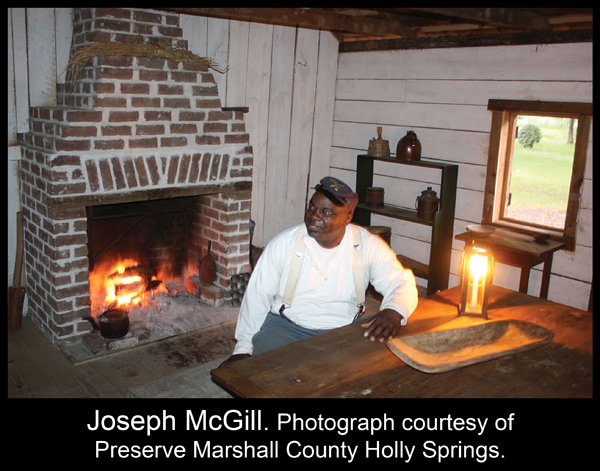 historic interpretation by Joseph McGill of the Slave Dwelling Project and formerly a field agent with the National Trust for Historic Preservation. McGill will spend a few nights in Holly Springs’ slave quarters and then bring their story to life during the weekend-long event. McGill’s mission is to help preserve the dwellings and educate the public. “I want people to respect and restore these places, together, and not be afraid to tell their stories.”
historic interpretation by Joseph McGill of the Slave Dwelling Project and formerly a field agent with the National Trust for Historic Preservation. McGill will spend a few nights in Holly Springs’ slave quarters and then bring their story to life during the weekend-long event. McGill’s mission is to help preserve the dwellings and educate the public. “I want people to respect and restore these places, together, and not be afraid to tell their stories.”
New to the Tour:
Archaeological Digging
Dr. Carolyn Friewald, Professor of Anthropology & Archaeology at the University of Mississippi will conduct field studies of the domestic lives of slaves during the tour, particularly around the food preparation areas. The excavation will take place on the grounds of the Hugh Craft house to study the domestic lives and eating habits of the Craft family’s slaves and, by association, the Crafts themselves.
Culinary Interpretations
Michael Twitty, culinary historian and interpreter, studies antebellum cooking methods and ingredients in a given historical context to recreate the blending of African cooking traditions and what was native to the land. Twitty will discuss the cooks of antebellum kitchens and enslaved people’s cabins for their unique role in giving the South her mother cuisine. Twitty will conduct food demonstrations throughout the tour.
and ingredients in a given historical context to recreate the blending of African cooking traditions and what was native to the land. Twitty will discuss the cooks of antebellum kitchens and enslaved people’s cabins for their unique role in giving the South her mother cuisine. Twitty will conduct food demonstrations throughout the tour.
The education tour is offered free to the public, thanks to grant assistance from the Mississippi Humanities Council, Mississippi Development Authority/Tourism Division, and Holly Springs Tourism; and donations from Friends of Behind the Big House Tour.
The Behind the Big House Education Project is sponsored by Preserve Marshall County and Holly Springs. To schedule a school or group, go to www.preservemarshallcounty.org or call the Marshall County Historical Museum, 662-252-3669.
On Tour April 8–12
- The Magnolias: 1852, 305 Craft Street, Holly Springs, Slaves’ quarters and detached kitchen, heavily rebuilt in modern interior/exterior renovations
- Burton Place: 1848, 248 South Memphis Street, Holly Springs, Slaves’ quarters and detached kitchen built of brick masonry with three rooms en tandem; in a preserved state
- Hugh Craft House: 1851, 184 South Memphis Street, Holly Springs, Slaves’ quarters and detached kitchen (ca. 1843), originally built for an earlier home on this site and retained by the Crafts.
Preserve Marshall County & Holly Springs, Inc. (501c3) formed in 2005 with the hope of bringing historic preservation advocacy and educational outreach to the community. ![]()
